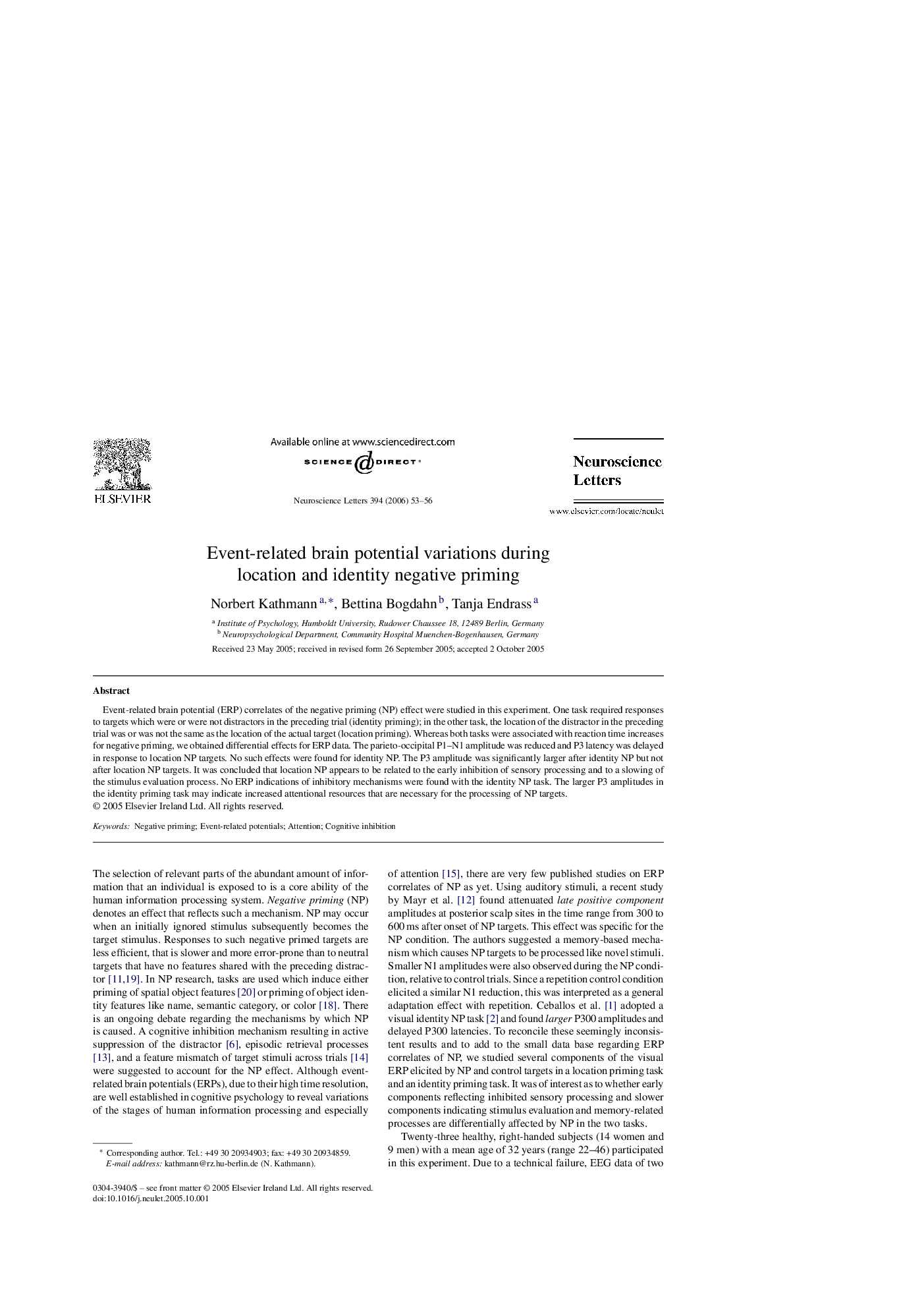| Article ID | Journal | Published Year | Pages | File Type |
|---|---|---|---|---|
| 4351195 | Neuroscience Letters | 2006 | 4 Pages |
Event-related brain potential (ERP) correlates of the negative priming (NP) effect were studied in this experiment. One task required responses to targets which were or were not distractors in the preceding trial (identity priming); in the other task, the location of the distractor in the preceding trial was or was not the same as the location of the actual target (location priming). Whereas both tasks were associated with reaction time increases for negative priming, we obtained differential effects for ERP data. The parieto-occipital P1–N1 amplitude was reduced and P3 latency was delayed in response to location NP targets. No such effects were found for identity NP. The P3 amplitude was significantly larger after identity NP but not after location NP targets. It was concluded that location NP appears to be related to the early inhibition of sensory processing and to a slowing of the stimulus evaluation process. No ERP indications of inhibitory mechanisms were found with the identity NP task. The larger P3 amplitudes in the identity priming task may indicate increased attentional resources that are necessary for the processing of NP targets.
